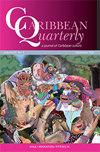Dancing in a Hurricane
Q3 Arts and Humanities
引用次数: 1
Abstract
HURRICANE GILBERT WAS A CATEGORY 5 STORM which struck Jamaica on 12 September 1988 before continuing on to the Yucatán peninsula in Mexico where it made landfall two days later. Gilbert was called the storm of the century as it set records for size, amount of rainfall, atmospheric pressure, track, and total energy.1 Forty-five people were killed in Jamaica and the island suffered widespread infrastructural damage (75 percent of housing stock was damaged),2 and significant loss of crops and livestock.3 It took Jamaica over six months to move everyone out of shelters and into new houses.4 By December 1988, tourist resorts were once again open to the public5 as the island saw the end of the emergency response period, and the beginning of a lengthy process of economic and social recovery. From September 1988 onwards, a number of texts were produced to narrate the story of Gilbert’s landing and the destruction the storm caused on the island. There were two types of texts: those representing the state’s view of the hurricane and its aftermath (statements by officials and government reports), and those representing the public’s view of Gilbert (witnesses’ testimonials, artistic works reflecting public sentiment, and so on). We will examine how Hurricane Gilbert was described in the two types of texts. We will begin with the statements by government officials and newspaper coverage of the effects the hurricane had on the island immediately after the landfall, and within the first three months of the aftermath. The texts used for this purpose come from a compilation of newspaper reports and statements by government officials.6 We will then proceed to the analysis of two songs written shortly after the hurricane: “Wild Gilbert” by Lloyd Lovindeer7 and “Gilbert Attack Us” by Banana Man.8 We aim to determine whether the way these songs depict Gilbert is similar to that presented in the state texts or whether there are significant在飓风中跳舞
飓风吉尔伯特是一场5级风暴,于1988年9月12日袭击牙买加,两天后继续登陆墨西哥尤卡坦半岛。吉尔伯特被称为本世纪风暴,因为它在规模、降雨量、大气压力、路径和总能量方面都创下了纪录。1牙买加有45人死亡,该岛的基础设施遭到广泛破坏(75%的住房受损),2以及农作物和牲畜的严重损失。3牙买加花了六个多月的时间才把所有人从避难所转移到新房子里。4到1988年12月,随着该岛紧急反应期的结束和漫长的经济和社会复苏进程的开始,旅游胜地再次向公众开放。从1988年9月起,制作了许多文本来讲述吉尔伯特登陆的故事以及风暴对该岛造成的破坏。有两种类型的文本:代表该州对飓风及其后果的看法的文本(官员的声明和政府报告),以及代表公众对吉尔伯特的看法的文字(目击者的证词、反映公众情绪的艺术作品等)。我们将研究飓风吉尔伯特是如何在这两类文本中被描述的。我们将从政府官员的声明和报纸对飓风登陆后以及飓风过后前三个月对该岛影响的报道开始。用于此目的的文本来自报纸报道和政府官员的声明汇编。6然后,我们将继续分析飓风过后不久创作的两首歌曲:Lloyd Lovendeer的《狂野的吉尔伯特》7和Banana Man的《吉尔伯特袭击我们》8。我们旨在确定这些歌曲对吉尔伯特的描述是否与州文本中的描述相似或者是否存在
本文章由计算机程序翻译,如有差异,请以英文原文为准。
求助全文
约1分钟内获得全文
求助全文

 求助内容:
求助内容: 应助结果提醒方式:
应助结果提醒方式:


